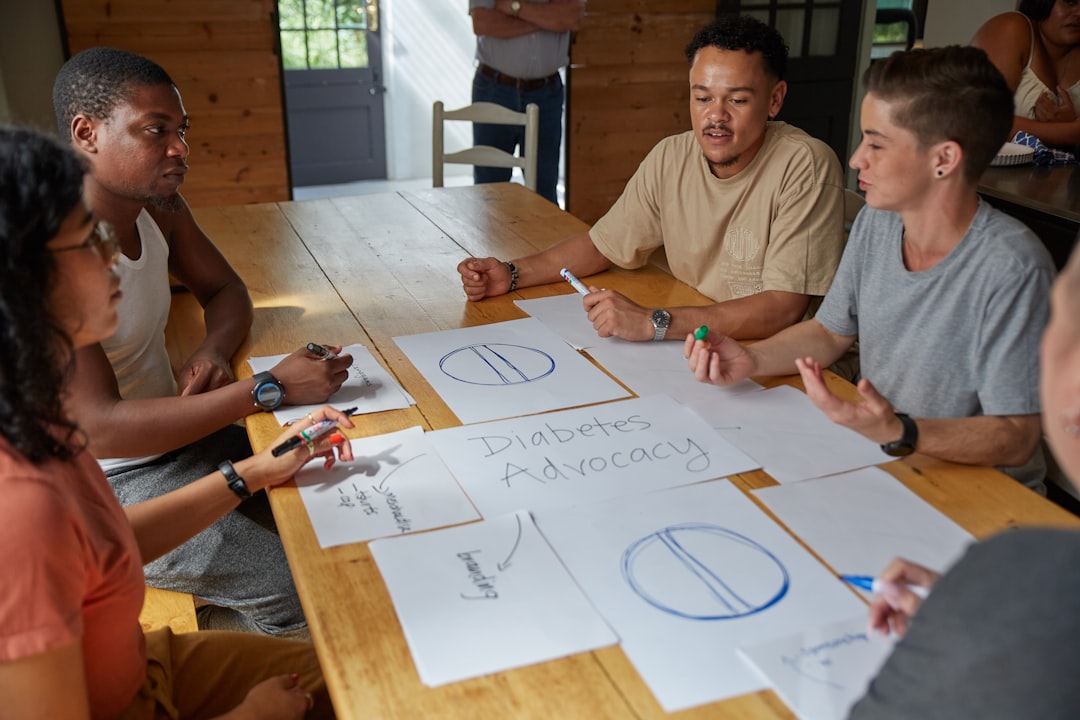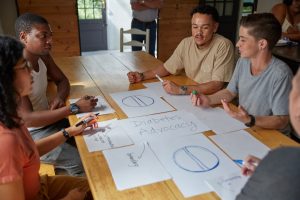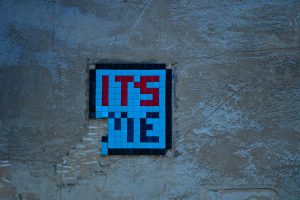Holistic Framework to Enhance Shared Design Leadership
Discover how a holistic framework can transform shared design leadership. Elevate your team’s collaboration and creativity today.
Understanding the Essence of Shared Design Leadership
Defining Shared Design Leadership
Shared design leadership is an approach that distributes leadership responsibilities across a team rather than centralizing them in a single individual. This model emphasizes collaboration, collective decision-making, and leveraging diverse perspectives to drive innovative design solutions.
By embracing shared design leadership, organizations can foster a more inclusive and dynamic environment where creativity and innovation thrive.
The Role of Communication in Shared Leadership
Effective communication is the cornerstone of shared design leadership. It ensures that all team members are aligned with the project’s goals and understand their roles within the team.
Open lines of communication facilitate the sharing of ideas and feedback, which is crucial for refining design concepts and achieving the best outcomes. Regular meetings, collaborative tools, and transparent processes help maintain this communication flow.
Empowering Team Members
Empowerment is a critical component of shared design leadership.
By giving team members the autonomy to make decisions and contribute their unique insights, organizations can harness the full potential of their collective expertise. This empowerment also fosters a sense of ownership and accountability, motivating team members to invest more deeply in the project’s success.
Building a Collaborative Culture
A collaborative culture is essential for the success of shared design leadership.
This culture is built on trust, respect, and a shared vision for the project. Encouraging collaboration involves creating an environment where team members feel safe to express their ideas and challenge assumptions.
Leaders play a pivotal role in modeling collaborative behaviors and facilitating team-building activities that strengthen interpersonal relationships.
Challenges and Solutions
While shared design leadership offers numerous benefits, it also presents challenges such as potential conflicts, decision-making delays, and the need for consensus-building. Addressing these challenges requires clear guidelines for conflict resolution, decision-making frameworks, and the establishment of roles and responsibilities.
Regular training and development opportunities can also equip team members with the skills needed to navigate these complexities effectively.
Implementing Collaborative Strategies for Design Success
Fostering Open Communication
Open communication is the cornerstone of successful collaborative design strategies. By establishing clear channels for dialogue, team members can freely share ideas, provide feedback, and address concerns.
This transparency not only helps in aligning the team’s vision but also ensures that everyone is on the same page regarding project goals and expectations. Regular meetings and digital communication tools can facilitate this openness, making it easier for team members to collaborate effectively regardless of their physical location.
Encouraging Cross-Disciplinary Engagement
Design success often hinges on the ability to integrate diverse perspectives.
Encouraging cross-disciplinary engagement allows team members from different fields to contribute their unique insights and expertise. This approach not only enriches the design process but also fosters innovation by combining various methodologies and problem-solving techniques.
Teams should be structured to include members from different disciplines, ensuring that a wide range of ideas and solutions are considered.
Establishing Clear Roles and Responsibilities
For collaborative strategies to be effective, it is crucial to define clear roles and responsibilities within the team. This clarity helps prevent overlaps and confusion, allowing team members to focus on their specific tasks while contributing to the overall project.
Clearly defined roles also facilitate accountability, as team members understand what is expected of them and can be held responsible for their contributions. Regular updates and role assessments can help maintain clarity and adapt to any changes in the project scope or team dynamics.
Leveraging Collaborative Tools and Technologies
In the digital age, a plethora of tools and technologies are available to support collaborative design efforts.
Platforms such as project management software, collaborative design tools, and cloud-based storage solutions enable teams to work together seamlessly, even from remote locations. These tools allow for real-time collaboration, version control, and easy access to shared resources, which are essential for maintaining momentum and ensuring the successful implementation of design strategies.
Building a Culture of Trust and Respect
A culture of trust and respect is vital for effective collaboration.
Team members should feel valued and respected for their contributions, fostering an environment where they are comfortable sharing ideas and taking creative risks. Building trust involves recognizing and appreciating diverse perspectives, promoting inclusivity, and ensuring that all voices are heard.
This supportive atmosphere encourages team members to engage more deeply with the project, leading to more innovative and successful design outcomes.
Nurturing a Culture of Design Innovation
Emphasizing Collaborative Creativity
In a holistic framework for shared design leadership, fostering a culture of design innovation begins with emphasizing collaborative creativity. This involves creating an environment where team members feel empowered to share ideas openly and contribute to the creative process.
By encouraging cross-disciplinary collaboration, organizations can harness diverse perspectives, leading to more innovative solutions.
Leaders play a crucial role in establishing this culture by modeling open communication and valuing input from all team members. Regular brainstorming sessions and workshops can facilitate this collaborative spirit, allowing ideas to flow freely and evolve through collective input.
Encouraging Risk-Taking and Experimentation
Design innovation thrives in environments where risk-taking and experimentation are encouraged.
A holistic framework for shared design leadership supports this by creating a safe space for teams to explore new ideas without fear of failure. Leaders should promote a mindset that views failure as a learning opportunity, rather than a setback.
Implementing pilot projects and prototyping can be effective strategies to test new concepts and iterate quickly based on feedback.
By fostering an experimental approach, organizations can stay agile and responsive to changing market demands.
Integrating User-Centric Design Thinking
User-centric design thinking is a cornerstone of nurturing design innovation. By prioritizing the needs and experiences of end-users, teams can create solutions that are not only innovative but also relevant and impactful.
Shared design leadership frameworks should integrate user research and feedback mechanisms throughout the design process.
Empathy exercises, user interviews, and usability testing are valuable tools that help teams understand user needs and pain points. By continuously engaging with users, organizations can ensure that their design innovations are grounded in real-world applications and address genuine challenges.
Building a Supportive Infrastructure
A supportive infrastructure is essential for sustaining a culture of design innovation.
This includes providing access to the necessary resources, tools, and technologies that enable creative exploration and development. Organizations should invest in training and development programs to enhance the skills and capabilities of their design teams.
Additionally, establishing a network of mentors and industry experts can provide valuable guidance and support.
By creating an ecosystem that nurtures talent and encourages continuous learning, organizations can maintain a competitive edge in design innovation.
Leveraging Collective Expertise for Effective Leadership
Understanding the Power of Collective Expertise
In the realm of shared design leadership, collective expertise serves as a cornerstone for driving innovation and achieving effective outcomes. By pooling diverse skills and perspectives, teams can tackle complex design challenges with greater agility and creativity.
This collaborative approach not only enhances problem-solving capabilities but also fosters a culture of continuous learning and adaptation.
Building a Collaborative Environment
Creating an environment that encourages open communication and mutual respect is essential for leveraging collective expertise. Leaders should focus on establishing trust among team members, promoting transparency, and facilitating open dialogue.
This involves recognizing and valuing each individual’s contributions, which in turn empowers team members to share their insights and ideas freely.
Integrating Diverse Perspectives
Effective leadership in a shared design context requires the integration of diverse perspectives. By embracing a holistic framework, leaders can ensure that various viewpoints are considered in the decision-making process.
This inclusivity not only enriches the design process but also leads to more innovative and user-centered solutions. Encouraging diversity within teams can also uncover hidden opportunities and mitigate potential biases.
Facilitating Knowledge Sharing
Knowledge sharing is a critical component of leveraging collective expertise.
Leaders should implement systems and practices that facilitate the exchange of information and experiences among team members. This can include regular workshops, collaborative platforms, and mentorship programs.
By fostering a culture of knowledge sharing, teams can build a robust repository of insights that can be drawn upon for future projects.
Empowering Team Members
Empowerment is key to harnessing the full potential of collective expertise. Leaders should focus on providing team members with the autonomy and resources they need to contribute effectively.
This involves delegating responsibilities appropriately and encouraging initiative. By empowering individuals, leaders can cultivate a sense of ownership and accountability, driving the team towards achieving shared goals.
FAQ
Q1: How can businesses effectively implement a holistic framework for shared design leadership?
A1: Implementing a holistic framework for shared design leadership involves several key steps. First, businesses should establish a clear vision and objectives for design leadership that align with their overall strategic goals. This requires engaging stakeholders across departments to ensure buy-in and collaboration. Next, create a structured process for decision-making that includes input from diverse team members, fostering an inclusive environment where all voices are heard. Additionally, invest in ongoing training and development to equip leaders with the necessary skills to guide and inspire their teams. Finally, regularly review and adjust the framework to address any challenges and leverage new opportunities, ensuring it remains relevant and effective.
Q2: What are some common challenges businesses face when adopting shared design leadership, and how can they overcome them?
A2: One common challenge is resistance to change, as traditional leadership models may be deeply ingrained in the company culture. To overcome this, businesses should communicate the benefits of shared design leadership clearly and provide examples of successful implementations. Another challenge is ensuring effective communication and collaboration across diverse teams. This can be addressed by establishing clear communication channels and fostering a culture of openness and trust. Additionally, balancing the need for creative freedom with structured processes can be difficult. Companies can overcome this by setting clear guidelines and objectives while allowing flexibility for innovation within those parameters.
Q3: Can you recommend any books for further learning about holistic design leadership in business?
A3: Certainly! A highly recommended book is “The Design of Business: Why Design Thinking is the Next Competitive Advantage” by Roger Martin. This book explores how integrating design thinking into business strategy can drive innovation and competitive advantage. Another valuable resource is “Creative Confidence: Unleashing the Creative Potential Within Us All” by Tom Kelley and David Kelley, which provides insights into fostering a culture of creativity and collaboration. Both books offer practical advice and case studies that can help businesses understand and implement holistic design leadership effectively.
Takeaway
Ready to level up your skills and boost your career success? Take the first step today by enrolling in our online course, downloading our top-rated productivity tool, or subscribing to receive weekly career tips. Start your journey towards professional growth and achievement now!











Comments